What is a partition cabinet for?
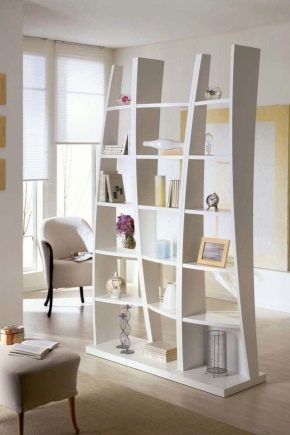
The partition cabinet can be used not only for zoning a room and dividing it into several functional areas, but also as a decorative addition. Everything that concerns this piece of furniture will be discussed in our article.
What it is?
To change the surrounding space, you can use all kinds of options for interior walls, screens and other construction and furniture objects.
Interior barriers must meet the following requirements:
- nice design;
- various design options;
- stability and strength of the structure;
- good level of sound insulation;
- profitability.
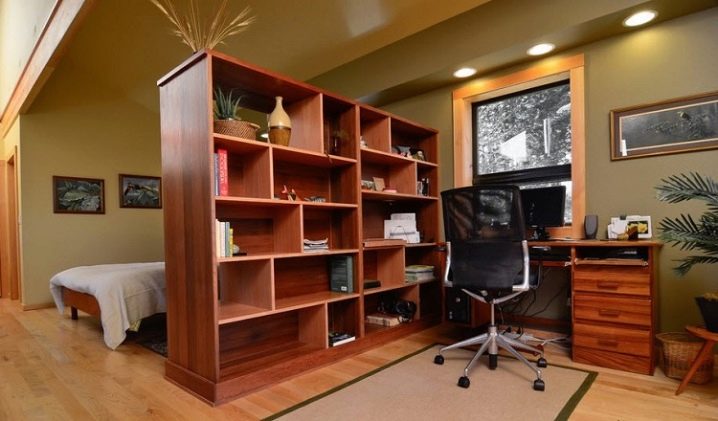
However, if you need a place for a large number of things, there is a desire to diversify the interior with an interesting design solution or even allocate a separate room in the room - a special type of furniture is needed, consisting of sections for different purposes (for equipment, clothing, decor items).
In this case, the most reasonable solution would be to use, instead of a partition, a cabinet that performs the functions that you need, including not only storage, but also the ability to build in household appliances, a table, and doors.
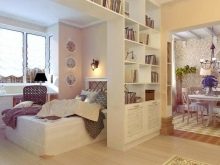
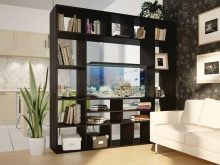
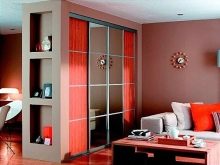
Views
Let's designate the following main ones:
- Rack - an interior item consisting of shelves and vertical walls can be one-sided (access to stored items is provided from one side) or two-sided (stored items can be placed and removed from both sides). The advantage of the rack is the ease of use of the contents. In addition, the rack, open on both sides, provides light access to the part to be fenced off.
- Normal, with hinged doors. It should be remembered that such furniture takes up a lot of space and when designing, you need to plan in which direction the doors will open and take into account their width. Such furniture is less convenient, but, as a rule, more affordable in terms of cost.
- Coupe. A distinctive feature is the sliding doors, which significantly save living space. Modern storage systems of this kind are not only convenient and have a large number of variations in how they will be used inside, but also become an interesting design solution due to the abundance of finishing materials, mirrors or unique photo printing.


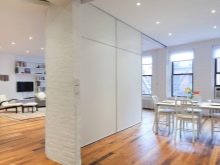
The wardrobe can be double, combine shelving niches, doors on hinges, rollers, monorails, pull-out elements.
Reversible models in any design will be more practical than more conventional models with access from one side.
Depending on whether the cabinets are associated with the architectural elements of the room, they can be divided into:
- built-in (floor, ceiling, walls serve as side walls);
- partially built-in (when the elements of the room replace one or two parts);
- stationary (free-standing, having an independent cover, bottom, doors, rear wall).
The shape of the wardrobe-partition can be:
- straightforward;
- angular;
- trapezoidal;
- with rounded ends.
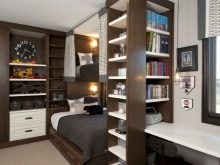

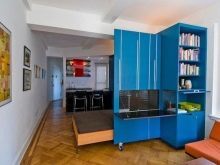
The form directly depends on the characteristics of the room and the wishes regarding the functions that it should perform. So, corner and trapezoidal ones are the most spacious, but take up more space. At the same time, a trapezoid cabinet with a rounded end will have a more streamlined shape and will provide more convenient access to another part of the room.
Its internal content depends directly on the external image.For example, straight and corner models have more options for pull-out systems, which will make better use of their spaciousness.

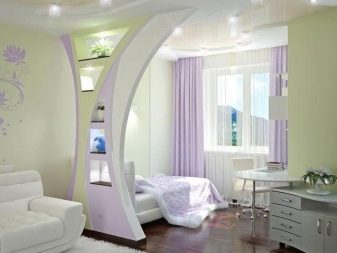
By functional accessory, cabinets are distinguished:
- Wardrobes (used for clothing) - usually equipped with a lowered or stationary bar for hangers, hooks for clothes that do not wrinkle; drawers, shelves for linen, tie holders, pull-out multifunctional baskets of full or partial extension, mirrors for reflection to the waist or full-length, spacious niches for shoes.
- Linen (for storing linen) - the package includes shelves, niches, drawers and containers.
- Books - most often they consist of shelves with cross racks, with or without doors. Doors, depending on the style, can be glass, with stained-glass windows, tinted.
- Kitchen (for household and kitchen items). Their equipment may include both closed and open shelves, fully or partially retractable systems and drawers, bottle holders, holders for towels and napkins, and ironing boards, tables, bar counters, work surfaces for cooking, a window for serving food, built-in appliances ( permissible in terms of technical parameters)


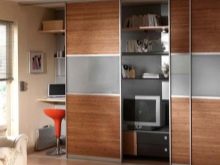
- Dishware (glass shelves and doors are usually used).
- Showcases - for displaying goods or exhibits.
- For toiletries - comfortable in bathrooms and toilets. Here, special attention should be paid to materials that are resistant to high humidity.
- For children's rooms. When choosing, it is necessary to establish compliance with international standards for use in direct contact with children.
- With a doorwhen it is attached to the outer wall of the structure.
- Special purpose (instrumental, laboratory, weapon, for overalls or special equipment).
- Combined. Probably the most widespread, since this or that cabinet is extremely rare in "pure" form. At the request of the customer, his individual project can be filled with a variety of components.
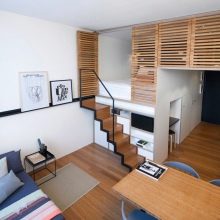
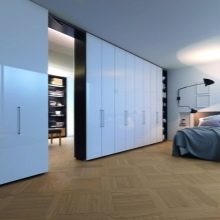
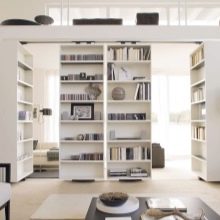
The main materials from which the sections are made can be wood, chipboard, MDF, plywood, metal, plastic, glass... When choosing a material, it is necessary to take into account not only how it looks, but also compliance with international certificates, how this material is suitable for a particular room, safety, durability.
For example, a monorail mechanism for sliding compartment doors is more reliable than a roller mechanism. Metal rollers will last longer than similar ones made of plastic. Among the profiles of the sliding system, preference should be given to steel. Since it is characterized by high strength, wear resistance, durability. Aluminum, as a result, is less reliable, but more pleasant.
Pay attention to chipboard products made according to European standards - they contain less formaldehyde. Modern facades are decorated with various types of glass, leather, acrylic, etc.
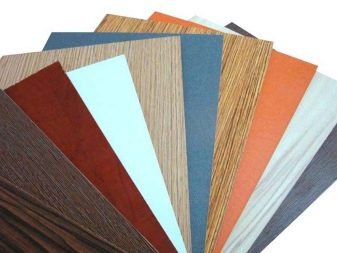
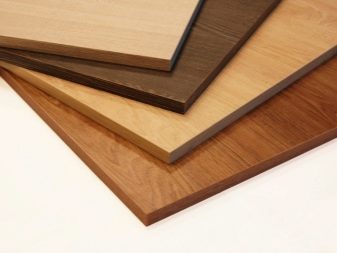
The choice of reliable edges, front and inner coverings, as well as high-quality fittings will keep a pleasant impression of the purchased furniture for many years.
What is it needed for?
The actual layout of the apartments is not designed for the premises as a whole, but for its parts, which are freely located in a specific residential area. The result is a huge territory that performs a variety of functions - recreational, residential, economic.
Free planning is most often used in the construction of apartments of a democratic type, its meaning is in the independent creation of amenities for both one person and for a group of people or a family and in its change over time. For example, if the number of workers in the organization has changed or children have appeared in the family.There is no need to make changes that require time and money, destroying what interferes - you just need to create a territory where it will be comfortable to live or work.
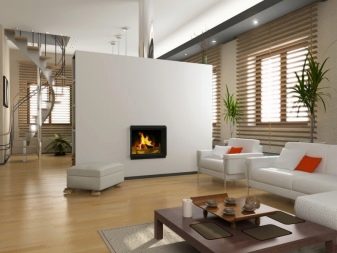
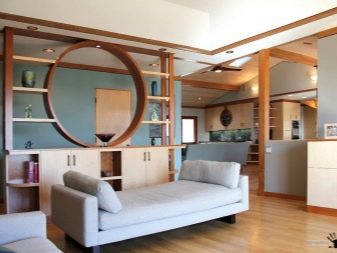
When the question of zoning arises, for example, to allocate a nursery or an office, to separate a recreation area for employees in an office or to increase the area of a locker room for workers, internal walls come to the rescue. They can be made of various materials, which, of course, are not devoid of advantages, but almost all are devoid of mobility (it is impossible to move the wall if desired) and it is possible to use a wall made of plasterboard or brick only in one way or another. Whereas borders created with furniture change their location more easily and carry a lot of additional practical and aesthetic functions.
Zoning is a clear allocation of zones in a room that have homogeneous functions.
The basic principles of zoning are:
- Formation of internal short connections.
- Isolation of the functioning zones.
- Dependence on social, age and other characteristics of people who regularly visit the structure and their lifestyle.
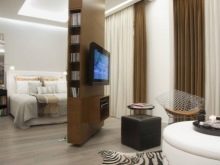

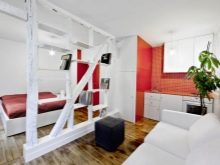
One of the options for zoning a dwelling can be a divider such as a wardrobe.
Acting as a partition, the dividing function, bordering on the following functions, becomes a priority:
- storage of things;
- saving footage in the room;
- additions to the general style;
- decorating.
This item allows you to do without construction, installation of unaesthetic fences made of textiles and other devices. There is more storage space. Since such a cabinet can be made in different styles, there is room for imagination. There is no need to break anything, there are lightweight structures that will allow you to get the job done with the least intrusion into the environment and without high costs.
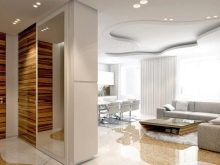
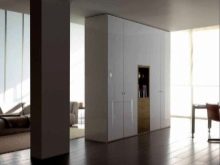
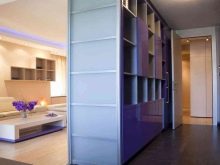
Space sharing options
This is one of the most important components of any design project. It is it that creates a unique, comfortable interior, functionally or visually dividing into zones and placing accents.
The main techniques that are used here:
- With color accents (of course, we are talking about colors that are combined with each other, but give some autonomy to parts of the room). Visually, it works. But a significant drawback is the lack of convenience and functionality.
- Method of decorative designs. This includes the creation of barriers with niches, shelves, fireplaces, built-in aquariums, arches. Such a solution does not load the general view with unnecessary constructions, supports the general concept of unity, but the visual effect of the border is present. And in comparison with blind structures, this method looks more elegant and unobtrusive.
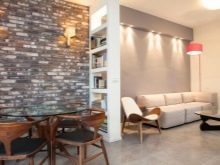
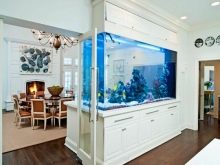

- Podium construction. Can be a great option for rooms with high ceilings, and storage bins built into the podium are an added benefit.
- Reception zoning by using different flooring materials or colors... Quite an economical option and easy to implement.
- Ceiling and lighting drops let you create amazing visuals.
- The most popular trick is zoning with furniture... It is not only beautiful, but also ergonomic and functional, without the use of additional structures.
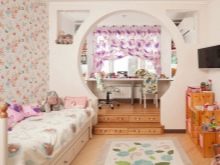
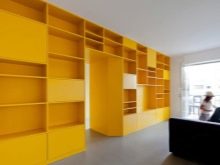
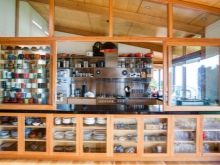
It will be most effective to combine several of the techniques listed above, this will help make your room unique.
As for residential apartments, along with the above, it is also used:
- Day and night zoning or, if it concerns the family, the general and individual parts. If we take the division of a room in a studio, a one-room apartment or an apartment with a large living room, in the end we get two parts - day or common, which is used by all family members and guests and night or individual, where the whole family or part of it retires for the night and where they do not have access by strangers.
- Differentiation by generality of regular household processes. As a result, we get a room, for example, divided into a kitchen, a dining room and a recreation area.
Installation of a partition cabinet in rooms for different purposes has different functions.In the office, such a cabinet will be designed for storing documents, in the store - for storing and displaying products, in the production room - for storing overalls or tools.
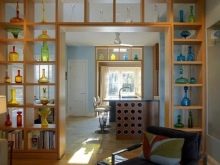

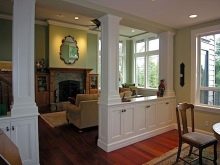
Interior ideas
In a residential area, the purpose of the partition cabinet will depend on the zone in which it is installed. When separating the nursery, it will be useful to provide for a pull-out table. At the same time, we need compartments for clothes, shoes, toys, sports equipment.
When separating the office, it is necessary to provide shelves for books and documents.
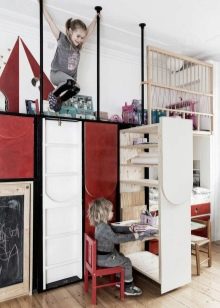
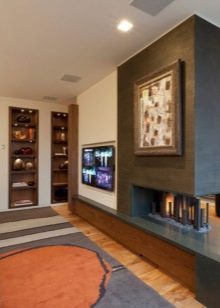

If, with the help of a narrow cabinet, where household items will be stored, we partition the combined bathroom, then we will get an original replacement for wall cabinets and a more comfortable pastime.
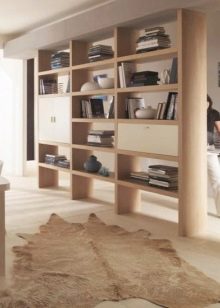

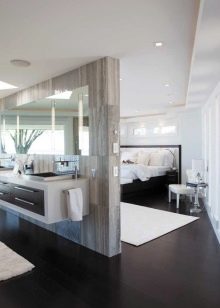
If you divide the kitchen and dining room or allocate space for processing, preparing and storing food in a large room, you need to provide space for household appliances. It is better if it is built-in appliances, which, if properly installed and used, will not harm the furniture and will look organic in any environment.
In addition to the options proposed above, a wardrobe as a partition can separate bedrooms, hallways, dressing rooms, storerooms, and various utility rooms. So we can say that the wardrobe-partition, due to the variety of types and materials, is a unique item that easily delineates any room and fits into any stylistic design.
For information on how to build a rack-partition with your own hands, see this video.













The comment was sent successfully.